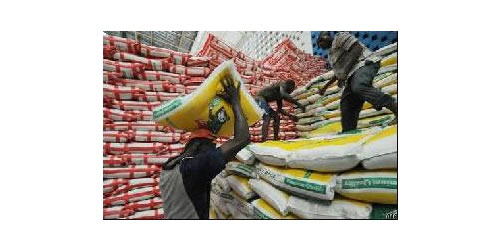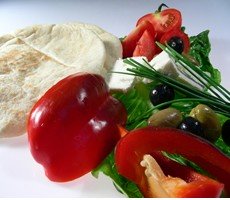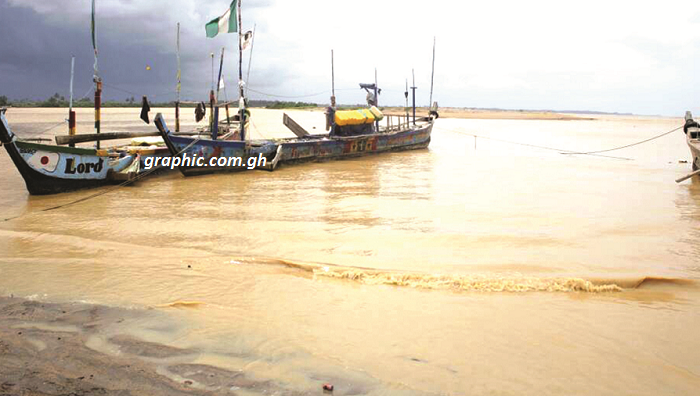Making Ghana net rice exporter; 2020 looms large

Government has said it is poised to cut the rice import bill of about US$600million and make the country net exporter by 2020, and there is no time to waste.
When he visited Scotland in March, President Mahama told parliamentarians there that “We’ve taken rice from the production of 30 to 60% as I speak and so gradually we’re reducing rice import to Ghana”.
Current production is said to hover around 290,000metric tonnes whilst, according to the United States Department of Agriculture (USDA), Ghanaians, in 2014, consumed a total of 754,698 metric tonnes of rice, with imports making up 52 per cent. Smuggling was not accounted for.
The USDA forecasted in January 2015 that between October 2014 and September 2015, Ghana would import 600,000 metric tonnes of rice to augment the country’s needs.
A number of challenges stand in the way of the country’s ambitious attempt at reversing the over-importation of a commodity that has overtaken other traditional meals as a staple, especially in urban areas.
Challenges
The Food and Agriculture Minister, Alhaji Mohammed Limuna argues that efforts at increasing local rice production to curb over-reliance on importation of the commodity is being undermined by lack of adequate infrastructure—specifically rice processing mills—in rice-producing communities of the country
For the 2014/15 farming season, farmers in the three northern regions had thousands of bags of rice locked up in warehouses due to the unavailability of mills to process the commodity, a situation that compelled the farmers to use manual means of rice processing which do not meet market standards.
Ghanaian consumers often cite the presence of stones and paddy rice in locally produced rice, aside price, as the reason they opt for imported brands.
According to the Minister, the situation is an impediment to government’s quest to motivate rice farmers into boosting local production of the commodity to cushion food security, aside from robbing the farmers of their primary source of livelihood.
He said: “Lack of rice-processing plants in the Northern Region is making it difficult to produce to feed the nation and produce quality rice that meets market specifications.
The few in the region are defunct—a situation that has compelled government to continue spending huge sums of money to import similar goods to meet demands of the population. This is affecting income generation of the local rice farmers, aside from discouraging most of the farmers from venturing into the rice sector only to incur debt.”
There are also other production constraints, such as land tenure problems, removal of subsidy on inputs, absence of water control systems which consequently leads to high-risk and non-intensive cropping practices.
Other problems include low yields and low profitability, reduction of the productive capacity of the soil, coupled with over liberalization of rice trade in Ghana.
Locally cultivated rice is often unattractive to prospective buyers or consumers, and sometimes not available to them at all.
Rice is important to the country’s economy and agriculture, accounting for nearly 15% of the Gross Domestic Product (GDP). The rice producing area totals about 45% of the total area planted to cereals. The rice sector is an important provider of rural employment.
Imported rice is also perceived to be of better quality than local rice and thereby reported to command higher prices.
Esoko, a company the promotes the use of telecommunications in the agri value-chain, reports, however, that the price of imported rice saw a continuous reduction of about 20 percent in February.
Its Ghana Commodity Index attributes the decline in the price of imported rice to an increase in demand for local rice by consumers.
Gov’t strategic policies for rice
Government has said its strategy is to focus on some of the bottlenecks along the rice value chain that have inhibited the growth of the rice industry.
The strategy is targeting improvements in seed systems, fertilizer marketing and distribution system, harvesting access and maintenance system and research and technology dissemination.
Others include community mobilization, farmer-based organisation and credit management system, as well as monitoring and evaluation.
According to Dr. Ahmed Yakubu Alhassan, Deputy Minister of Food and Agriculture, for effective and comprehensive implementation of the strategy and its proposed interventions, it had become necessary to revise the document to include emerging issues facing the sector, so it would be an organic document.
He said since it was launched in 2010, it had been one of the documents guiding rice development in Ghana, as many areas identified in the strategy document were being applied by some stakeholders in their operations.
He said a number of interventions had been designed, focused on areas which include; rice sector support project with emphasis on the development of water harvesting and regulatory structure supported by AFD, rice seed scaling project, supported by USAID, improvement and scaling up of the system of rice intensification in Ghana supported by World Bank.
Other interventions are; West Africa seed programme supported USAID/West Africa, Enhanced Access to quality rice seed initiative supported by World Bank/, EDAIF sponsored rice project, preparation of the rice seed road map, supported by CARD, inland valley rice development project supported by AfDB and the Nerica Rice Dissemination project supported by AfDB.
Source: B&FT




